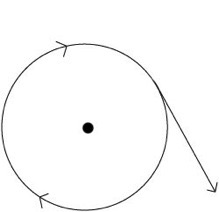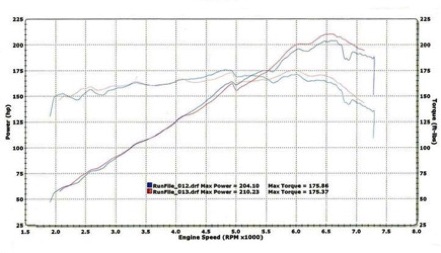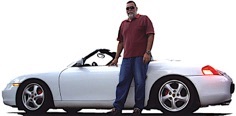

Published in the August 2010 issue of “Die Porsche Kassette”
Have you ever wondered why “torque vs. horsepower” has always drawn so much debate? I think it’s because since the definitions involve trigonometry and physics most people don’t want to go through the hassle of deciphering it all.
Let me try to simplify it a bit.
Here’s the short of it: Horsepower (HP) doesn’t really exist, just torque!
You don’t believe me?
Here’s definition: Horsepower = (Torque x Engine Speed)/5252.
So, HP is just a function of Torque.
But first we need to understand a few concepts:
Force is the pressure of one mass against another. In the metric system force is calculated in “Newtons”. Gravity is an easy example of a natural force and in the English system its unit is pounds. So we also use pounds as a basic unit of force.
Work is defined as force over distance and is calculated as Work = Force x Distance.
Work is achieved when a force causes an object to move. The force placed on the object and the distance it moves is the work done.
Power is the amount of work that can be done in a certain amount of time and is calculated as Power = Work / Time. Power was originally defined by James Watt (inventor of the steam engine) who noted that a horse could lift at a rate of about 550 lb-ft per second in an 8 hour shift.
Torque is the tendency of a force to rotate an object about an axis and is defined as the force at any one point on the edge of a circle in the exact direction of rotation, multiplied by the radius (distance from the center).
As we explained above, in the metric system, force is calculated in Newtons, and distance is in meters, so the standard torque unit is Newton-Meter (N-M). In the Standard/English system, force is calculated in pounds and distance in feet. So the torque unit is lb-ft, usually called “foot-pounds” and sometimes also written as “ft/lb”.
Torque is the measure of the turning force of an object, such as a flywheel or a bolt. For example, pushing or pulling the handle of a wrench connected to a nut or bolt produces a torque (turning force) that loosens or tightens the nut or bolt.
Horsepower is a unit of power. It can be defined in multiple ways, but in its basic sense , it is defined as work done in a straight line as described above under “Power”. When the work is not done in a straight line (as in an automobile engine), it must be defined in a different way: Torque.
Horsepower = (Torque x RPM) / 5252.
It’s worthwhile noting that horsepower is not recognized in the International System of Units.
The reason Horsepower started being used was to compare the output of horses (which everyone understood) with that of the (then new - 1702) steam engines that could replace them. In a study done in 1993 to try to prove (or disprove) the theory it was found that one horse could produce a peak power over a few seconds as high as 15 hp. However it was observed that for sustained activity a work rate of about 1 hp per horse is consistent with what was determined in 1702.
Going back to the formula: HP = (Torque x RPM) / 5252 we can see that at an engine speed of 5,252 RPM Torque and HP are equal. That’s why when we see a graph of Torque / HP we see the lines always cross exactly at 5252 RPM.

But where does the 5252 come from?
Watt’s definition for HP says: 1 HP = 550 lb-ft / sec, or 1 HP = 550 lb x 1 ft / 1 sec
If we convert straight-line work to its rotational equivalent the formula becomes:
1 HP = 550 lb-ft x 1 rad / 1 sec (a rad is a unit-less measure of a circular distance)
When we convert radians (rad) to revolutions and seconds to minutes the formula again evolves. Note: 6.28 rad per revolution (2 π) and 60 seconds in 1 minute
1 HP = (550 lb-ft x 1 rad / 1 sec) x (1 rev / 2 π rad) x 60 sec / 1 min)
Multiplying and canceling, the formula simplifies to:
1 HP = 5252 lb-ft x 1 rev / 1 min which is the same as: 1 HP = 5252 lb-ft x 1 RPM
So, Horsepower = Torque x RPM / 5252.
If you’ve read this far I applaud you, since you now know where 5252 comes from and why the HP and Torque curves cross each other.
If you want to find out more about HP and Torque, and how to increase them in your Porsche, please visit our website: www.PedrosGarage.com.
Happy Boxstering,
© 2010 Technolab/PedrosGarage.com


